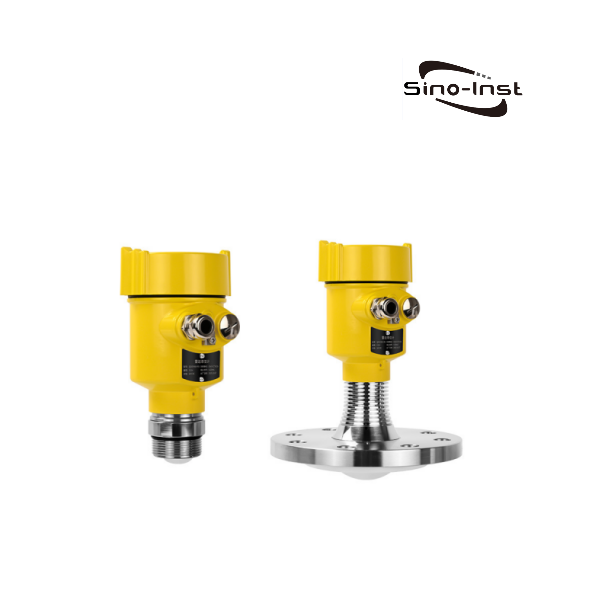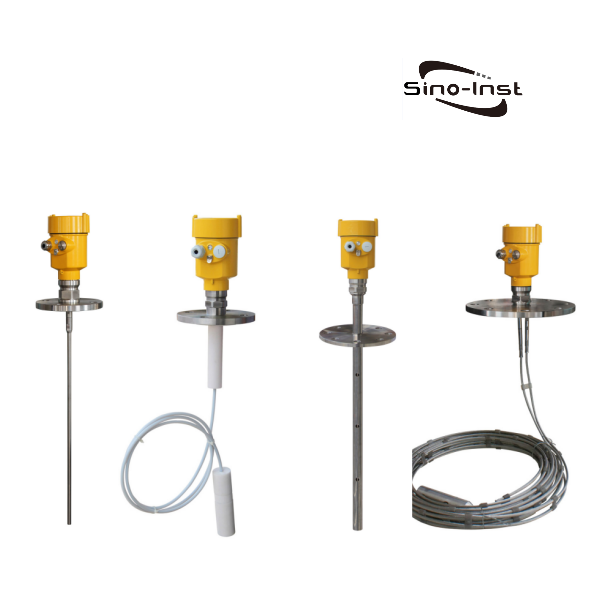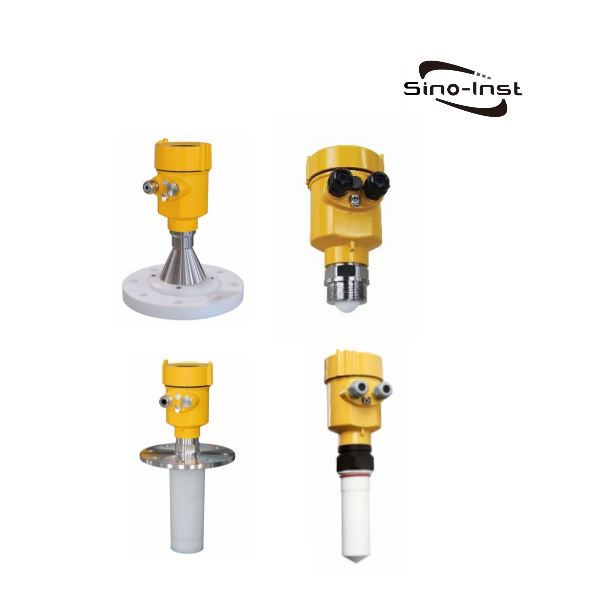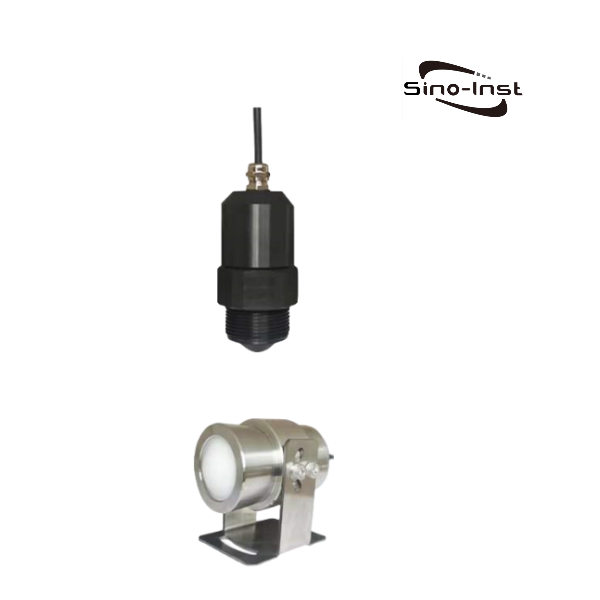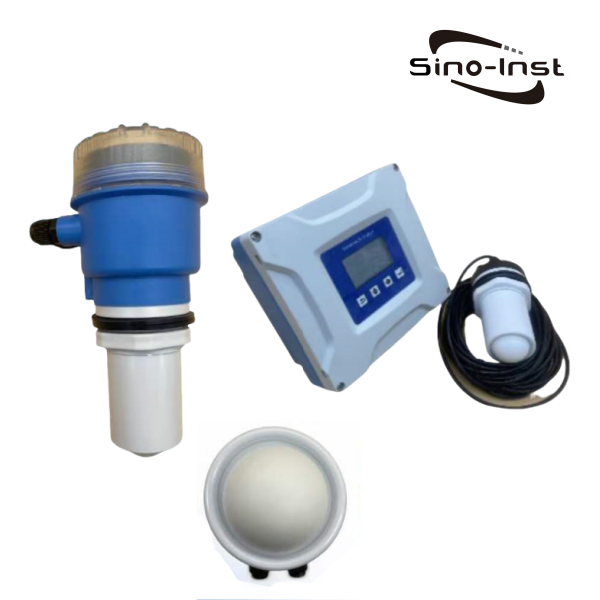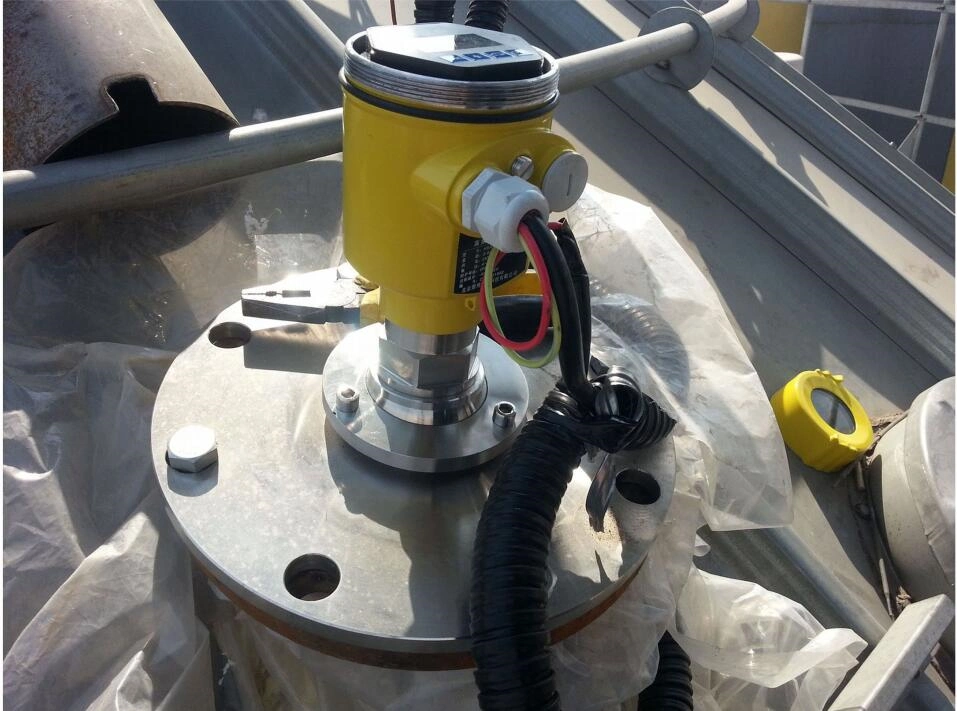
Radar level transmitters boast advanced technology and broad applicability. They have become the preferred solution for industrial liquid level monitoring. These devices are widely used in petrochemicals, water treatment, and food and pharmaceutical industries.
Therefore, understanding radar level transmitters and their operating principles is crucial for achieving precise and reliable liquid level measurement. This article provides a comprehensive overview to help you gain a thorough understanding of radar level transmitters.
What is a radar level transmitter?
A radar level transmitter is a device that uses radar technology to measure the level of liquids or solids. This includes liquids or solids in storage tanks, silos, or silos. It is a continuous level measurement device that provides real-time, non-contact level monitoring.
Key Features:
- Radar level gauges can measure crude oil, slurries, volatile liquids, and other substances.
- Can measure in a vacuum. Measurement range up to 150m.
- Power supply and output signal are transmitted through a single two-core cable. 4-20mA output or digital signal output is available.
- Non-contact measurement for easy installation. Accurate and reliable resolution up to 1mm.
- Unaffected by changes in medium density and temperature. Process pressure up to 400 bar. Medium temperature from -200℃ to 800℃.
- Multiple installation options available: threaded or flange mounting, typically installed on top of the measurement site.
Working principle of the radar level transmitter
The working principle of a radar level transmitter is to emit electromagnetic pulses and receive the reflected signals from the liquid surface. This principle enables non-contact level measurement of both liquids and solids.
These pulses propagate to the surface of the measured substance, reflect back, and are received by the sensor. The transmitter measures the time required for the pulse to travel round-trip and calculates the distance to the surface of the measured substance using the speed of light, thereby determining the liquid level.Its core formula is:
d (distance) = c (speed of light) × t (time difference)/2
Step-by-step operating principle
Signal transmission.
The transmitter of the radar level transmitter emits microwave pulses at a frequency of 440 kHz.
Signal reflection.
Part of the microwave signal is reflected back from the liquid surface, forming an echo signal.
Signal reception.
The receiver captures the echo signal.
Calculation.
The time required for the signal to travel from transmission to return is calculated, known as the “time-of-flight.”
Level conversion.
The level information is converted into a 4-20mA current signal and transmitted to the display or control system.
Level measurement.
The time-of-flight is multiplied by the signal propagation speed.
Types of radar level transmitters and their main working principles
Non-contact Radar Level Transmitters:
Non-contact radar level transmitters utilize frequency-modulated continuous wave (FM) technology. They can measure liquid surfaces with varying dielectric constants. Suitable for most liquid measurements and harsh environments.
Guided Wave Radar Level Transmitters:
Guided wave radar level transmitters transmit electromagnetic waves along a waveguide. They measure liquid level using the time difference of reflection. Suitable for low dielectric constant media or complex conditions (such as foam and steam).
Pulse Radar:
Pulse radar emits short pulse microwave signals and determines the liquid level by measuring the signal’s flight time. They have short operating times and are suitable for various media and industrial environments.
Continuous Wave Radar:
Continuous wave radar continuously emits microwave signals. They identify the liquid level through frequency or phase changes. Suitable for high-precision measurements and environments susceptible to interference.
Difference between radar and guided wave radar level transmitter
Radar level transmitters and guided wave radar level transmitters are commonly used for measuring liquid levels in storage tanks. Both utilize the principle of electromagnetic waves reflecting off the surface of a medium to measure the liquid level.
Visually, a guided wave radar level transmitter has an additional probe (cable) compared to a radar level transmitter, along which the electromagnetic wave propagates. However, their main difference lies in their contact technology: radar level transmitters use a non-contact “air penetration” technology, while guided wave radar is a contact technology that uses a probe to guide the electromagnetic wave.
Non-contact radar is unaffected by the properties of media such as foam and steam, but is more sensitive to steam and surface conditions. Guided wave radar is less affected by these factors but may be affected by probe fouling.
| Feature | Radar level transmitter | guided wave radar level transmitter |
| Working principle | Radar level transmitters transmit high-frequency microwave pulses. They calculate the liquid level using the time difference of reflection. | Electromagnetic waves propagate along the probe. They detect the liquid level using time-domain reflectometry. |
| Contact method | Non-contact measurement | Contact measurement |
| Medium | Liquids, granules, slurries, etc. | Water, oil, chemicals, granular or powdery materials. |
| Measurement range | Conventional radar level transmitters are commonly used in 30-meter and 40-meter storage tanks. Their measurement range can reach 150 meters. | Guided wave radar level transmitters have a measurement range of up to 30 meters. |
| Installation | Installed on top of the storage tank. | Installed on top of the storage tank, with the probe extending downwards into the tank interior. |
| Application | Suitable for large storage tanks, industries with high hygiene requirements, and extreme environments. | Suitable for containers with agitators, obstructions, or media containing foam or vapor. Because the probe guides the signal to avoid interference. |
Typical applications for radar level transmitters
Petrochemical Industry
Radar level transmitters can measure the levels of crude oil, methanol, and ethanol. Their non-contact design avoids corrosion and contamination.
Water Treatment Industry
Radar level transmitters can penetrate foam and vapor. They can reliably monitor the levels in reaction tanks and settling tanks.
Food and Beverage Industry
Radar level transmitters can measure the levels of raw materials and finished products in storage tanks and silos.
Pharmaceutical Industry
Radar level transmitters can monitor the levels in pharmaceutical equipment.
Power Generation Industry
Radar level transmitters can monitor the levels of fuel oil, cooling towers, and other water treatment facilities.
Read more about:
Advantages and Considerations of Radar Level Transmitters
Advantages
• Non-contact measurement
• High precision
• Suitable for harsh environments
• Low maintenance costs
• Extended measurement range
• Unaffected by medium properties
Considerations
Accuracy Limitations: Temperature, pressure, and atmospheric vapor can affect the accuracy of radar level transmitters.
Low Dielectric Constant Materials: Liquids with low dielectric constants may reflect weak signals.
Space Requirements: Non-contact radar sensors require an unobstructed air gap between the sensor and the material surface.
Material Buildup: For guided wave radar sensors, material buildup on the probe causes inaccurate measurements and necessitates cleaning.

Installation and use of a radar level transmitter
Installation
- Installation Location. The liquid level should be clearly visible from the installation locati0n. Avoid sources of interference such as the feed inlet, agitator, and baffles.
- Positioning. Install the transmitter as close as possible to the center of the tank.
- Distance from Tank Wall. Maintain a distance of at least 200 mm between the sensor and the tank wall.
- Orientation. Install vertically downwards.
- Installation. For flange-mounted sensors, tighten the bolts with nuts according to the manufacturer’s torque specifications.
Use and calibration
1. Wiring. Connect the positive terminal of the 24V power supply to the power terminal. Connect the negative terminal to the signal terminal. The control box wiring must correspond to the positive and negative terminals of the sensor.
2. Calibration. Input the medium characteristics and tank parameters. Empty tank calibration is based on the bottom of the tank. Full tank calibration is based on the actual liquid level. The error must be ≤ ±0.1%FS3.
3. Initial Calibration. Perform initial calibration according to the manufacturer’s instructions to accurately set the zero point and range.
4. Signal Optimization. The signal strength can be adjusted through the device interface to match the required measurement range.
5. Maintenance. Clean the probe surface regularly to prevent crystallization or dirt from affecting the signal.
FAQ
More Level Measurement Solutions
Radar level transmitters are core devices for non-contact level measurement in industrial applications. They offer high precision, strong environmental adaptability, and compatibility with complex operating conditions. These transmitters are essential for inventory management, process optimization, and environmental compliance.
We, Sino-inst, are a professional manufacturer of radar level transmitters and guided wave radar level transmitters. We produce a variety of 26GHz and 80GHz radar level transmitters and guided wave radar level transmitters. If you need to purchase radar level transmitters or have any questions, please feel free to contact us!
-1.jpg)
